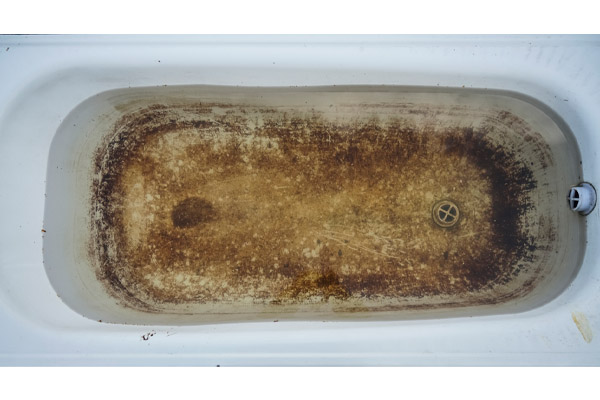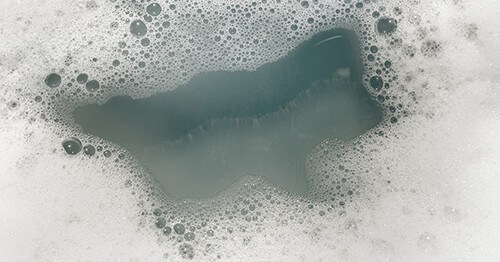This article down below involving Why is There Sewage Coming Up Through the Bathtub is unquestionably remarkable. Read it for your own benefit and figure out what you think about it.

Sewage back-up in the tub can be an upsetting and unhygienic problem for any kind of property owner. Not only is it bothersome, yet it likewise presents serious wellness dangers and indicates underlying problems with the plumbing system. Recognizing why sewage is showing up through the tub is vital for taking proper activity to deal with the trouble properly.
Introduction to the Problem
Understanding the Trouble
When sewer draws back up right into the bath tub, it's a clear indication of a trouble with the water drainage system. The wastewater that needs to be flowing far from your home is rather finding its back right into your home, which can result in considerable damages and health hazards.
Potential Reasons
Several factors can add to sewer backup in the bath tub. From clogs in the drain line to problems with the plumbing facilities, recognizing the root cause is necessary for locating a solution.
Usual Factors for Sewage Backup
Clogs in the Sewage System Line
Among one of the most typical causes of sewer back-up is a blockage in the sewage system line. This can occur as a result of the accumulation of particles, grease, or foreign items in the pipes, avoiding appropriate flow and triggering sewage to support right into your bathtub.
Tree Origin Invasion
Tree origins seeking wetness and nutrients can penetrate drain lines via little cracks or joints. Over time, these origins can grow and expand, triggering substantial damages to the pipelines and leading to sewer backup problems.
Aging Infrastructure
Older homes might have outdated plumbing systems that are a lot more susceptible to deterioration, splits, and damage. As pipelines age, they come to be extra vulnerable to leakages and obstructions, increasing the possibility of sewer back-up events.
Heavy Rainfall or Flooding
During periods of heavy rainfall or flooding, the drain system may become overwhelmed with excess water, triggering backups and overflows. This can lead to sewer backing up right into bath tubs and other fixtures inside the home.
Health Risks Associated with Sewer Back-up
Contamination of Water
Sewage backup can contaminate the supply of water in your home, presenting a severe health and wellness danger to you and your family. Exposure to contaminated water can cause intestinal concerns, skin infections, and various other health problems.
Spread of Disease
Sewage consists of dangerous germs, infections, and parasites that can trigger a range of illness, including hepatitis, cholera, and gastroenteritis. Entering into contact with sewage or polluted surface areas places you at risk of infection.
Mold and mildew Development
Moisture from sewage back-up can produce ideal conditions for mold growth in your home. Mold spores can aggravate respiratory troubles and cause allergic reactions in delicate individuals, making punctual clean-up essential.
Indicators of Sewer Backup
Foul Odors
Unpleasant smells rising from drains or components, especially in the bathroom, may suggest sewage backup concerns. These smells are often solid and consistent, signifying an issue that needs instant focus.
Slow Draining Fixtures
Tubs, sinks, and commodes that drain slowly or otherwise at all could be experiencing sewage backup. If several components are influenced all at once, it's likely that the issue stems from a common factor, such as the major drain line.
Gurgling Noises
Weird gurgling or bubbling noises originating from drains pipes when water is running elsewhere in your house are indicative of air trapped in the plumbing system. This air build-up can arise from sewer back-up and ought to be investigated immediately.
Immediate Actions to Take
Turning Off Water
In the event of sewage backup, it's important to switch off the water to stop additional contamination and damage. Find the main water shutoff valve in your house and shut it off until the concern can be fixed.
Calling a Professional Plumber
Taking care of sewer backup is not a DIY work. Contact an accredited plumber with experience in managing sewage-related issues to analyze the circumstance and do essential repair work or cleanings.
Preventing Contact with Contaminated Water
Up until the sewage backup is resolved, prevent contact with contaminated water to prevent the spread of germs and microorganisms. Wear safety equipment if you should be in the afflicted area and wash your hands completely later.
Safety nets
Regular Upkeep of Sewage System Lines
Schedule normal evaluations and maintenance of your sewer lines to recognize and address possible concerns before they intensify into significant troubles. This can consist of clearing out debris, inspecting for tree origin breach, and repairing any damaged pipelines.
Setting Up Bayou Valves
Take into consideration mounting bayou shutoffs in your plumbing system to stop sewage from flowing back into your home during durations of heavy rainfall or flooding. These valves instantly close when water starts backing up, shielding your residential property from contamination.
Proper Disposal of Home Waste
Avoid flushing anything besides toilet paper and human waste down the toilet to stop obstructions and obstructions in the sewer line. Dispose of oil, oil, and other household chemicals properly to minimize the risk of plumbing problems.
Tidying up After Sewer Backup
Disinfection Procedures
Extensively disinfect and sanitize impacted areas after sewer back-up to remove damaging microorganisms and prevent mold development. Usage ideal cleansing items and safety equipment to make sure risk-free and efficient clean-up.
Restoration of Affected Locations
Fix any type of damages to flooring, walls, or components triggered by sewer backup. Relying on the degree of the damages, you may require to replace carpeting, drywall, or other materials to restore your home to its pre-loss problem.
Why Is Water Backing Up in My Bathtub When I Flush My Toilet?
What to do about a sewer line clog
First, don’t bother with plunging. No amount of plunging will dislodge the clog in a sewer line. The clog is too far away. Plungers are for clogs in the toilet itself, not the sewer line. Plus, the most likely causes of a sewer clog are:
Tree roots Flushed toys or feminine products Grease buildup Those items don’t move easily. And in the case of tree roots, the roots need to be cut out of the pipe and the pipe will need to be repaired.
You’ll need a closet auger. A closet auger is a type of plumber’s snake with a protective cover to keep from scratching the delicate porcelain toilet. If the clog is further down, you may need to remove the toilet or use one of your cleanouts to get to the clog.
We also recommend doing a video inspection of the drain to ensure that the cause of the clog has been completely removed. Otherwise, you could have the same problem again in a few days or weeks.
https://mspplumbingheatingair.com/blog/why-is-water-backing-up-in-my-bathtub-when-i-flush-my-toilet

Do you like reading up on What to Do if Sewage Starts Coming Up Through Your Bathtub? Make a short review further down. We would be happy to see your feelings about this post. In hopes that you come back again soon. Loved our write up? Please quickly share it. Let someone else discover it. Many thanks for your time. Please visit our site back soon.
Request Appointment